Dell Zino HD 410 HTPC Review
by Ganesh T S on February 19, 2011 7:08 AM EST- Posted in
- HTPC
- Dell
- AMD
- Media Streamer
- ATI
The Zino 410 HD HTPC is primarily built out of notebook components, and it is not possible for the average enthusiast to build such a system with off-the-shelf components. The only non-notebook component in the whole system was the hard disk, which we will note further down in this section.
Motherboard & Chipset : mini-ITX AMD M880G + SB820 Southbridge
The motherboard used in the Zino 410 HD HTPC is based on AMD's mainstream Danube notebook platform. The M880G chipset has the option of an integrated 4250 GPU, which is not used in our system. It provides support for upto 6 SATA ports, two of which are used internally by the Blu-Ray drive and the hard disk, while two make an appearance in the form of eSATA. The SPDIF and analog audio output are driven by the Realtek ALC662 audio codec chip.
The mini PCI-E slot is taken up by the Dell WLAN 1520 802.11n card which is capable of 300 Mbps. The two antennae from the card are wired in such a way as to come in between the top lid and the intermediate panel separating it from the rest of the computer.
The underside of the motherboard has a MXM graphics slot and another DIMM slot in addition to the one available on the top side.
CPU : AMD Phenom II X4 P940 @ 1.70 GHz
Compared to the ASRock Core 100 and Vision 3D which went in with 35W TDP processors, the Zino 410 HD HTPC comes with a 25W TDP AMD Phenom II X4 P940. This TDP is a result of the low clock rate (1.7 GHz) at which the processor runs. Manufactured in a 45nm process, the processor has 4 cores running a total of 4 threads. Though the processor has 512 KB of L1 cache and 2M of L2 cache, there is no L3 cache unlike the Phenom desktop processors.
GPU : ATI Mobility 5450 MXM
The only discrete GPU option in the Zino 410 series is the Mobility 5450. The MXM module is mounted on the underside of the motherboard. It is the 40 nm Park Pro GPU clocked at 675 MHz, and has 1 GB of DDR3 memory.
With a rated power consumption of 11 W, it doesn't require a complicated cooling solution like what the GT425M warranted in the ASRock Vision 3D.
DRAM : Samsung's 1 x 4GB DDR3 SO-DIMM @ 1333 MHz + Hynix's 1 x 2GB DDR3 SO-DIMM @ 1333 MHz
The Zino 410 ships with more RAM than necessary for HTPC purposes right now. We have two RAM sticking slots. The one on the top side of the motherboard was populated with Samsung's K4B2G0846C DRAM chips. On the underside, we have 2GB of Hynix's HMT325S6BFR8C DRAM chips running with the same specifications as the Samsung chips.
Hard Disk : Western Digital Caviar Black 750GB 7200 rpm 3.5"
We were quite surprised to find a 3.5" hard drive inside the unit. Considering that the rest of the components are from notebook platforms, a 2.5" hard drive would have made much more sense.
The Caviar Black 7200rpm is a well reviewed hard drive and provides more than acceptable performance for a HTPC. However, its power consumption profile only makes the thermal design (about which we will talk in the next section) more challenging.
Optical Disk Drive : Htachi-LG Blu-Ray / DVD RW Tray Loading Drive
The Zino 410 ships with the Hitachi-LG CT10N Blu-Ray / DVD RW tray loading drive.
A slot loading drive would have made the unit appear better, but that is a minor quibble which doesn't affect the functionality of the system.
Keyboard / Mouse / Remote
The Zino 410 also comes with a wireless keyboard and mouse (other options are also available) and a MCE remote. Batteries are also included.
The remote is exactly the same as the one which ships with the ASRock Vision 3D, only a different colour. The wireless keyboard / mouse combo adds $75 to the cost right now. Compared to some of the deals which keep going on for these wireless accessories, I would strongly recommend purchasing them separately. Quality of the wireless keyboard / mouse is no great shakes, and it just gets the job done. On a HTPC where you might not spend much time typing, it is good enough.
The cost of the review unit, when configured with the same components on Feb 17, 2011 was $775 + taxes. At this price, it is smack in the middle between the ASRock Core 100 and ASRock Vision 3D, the other SFF HTPCs in this segment. In the next few sections, we will check out how the Zino 410 fares in our tests.


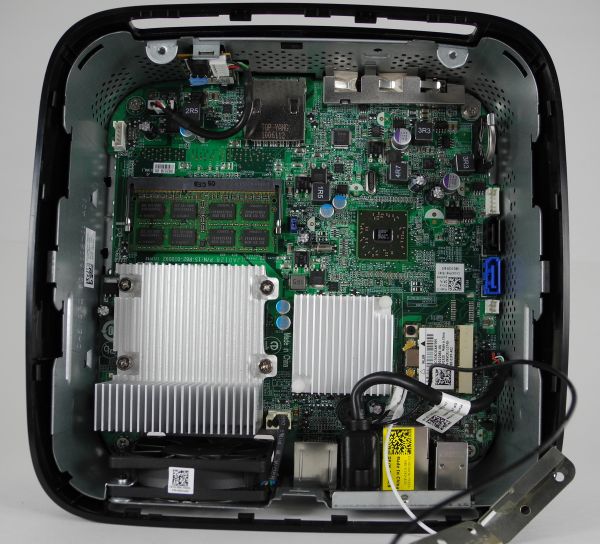
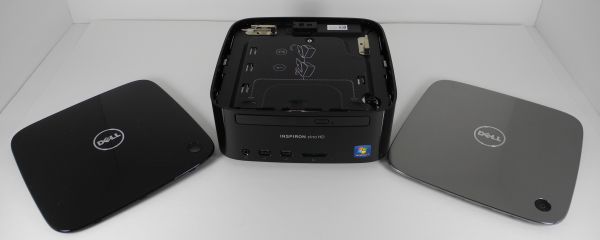

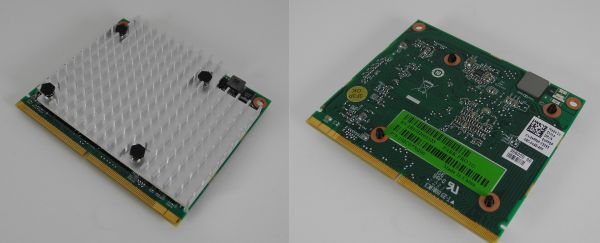

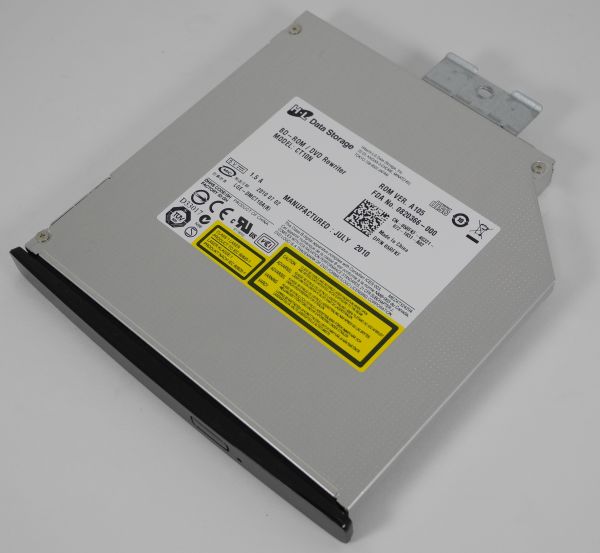
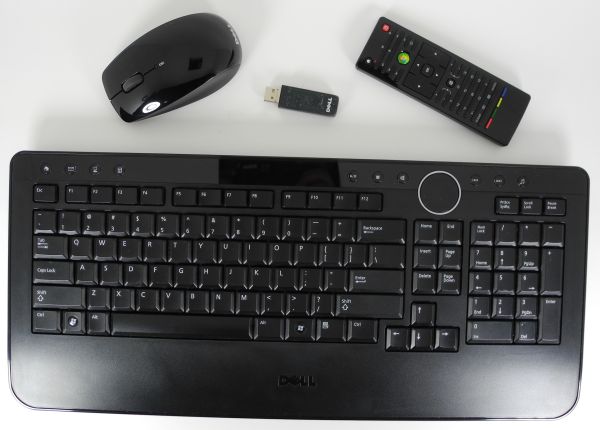








69 Comments
View All Comments
aylafan - Monday, February 21, 2011 - link
Wouldn't the motherboard have to be grounded to the case? I don't think many manufactuers has designed the motherboard to be hanging in the middle of the case. If you flipped the motherboard upside down; it would be practically the same thing, but less efficient. Now, you can put the motherboard on the side of the case, but then it would be a normal size desktop PC and wouldn't be a HTPC anymore. I'm just visualizing this in my head. I could be wrong. Futhermore, they would need to redesign the heatsink with less space they have to work with. We're talking about a compact HTPC here and not one of those no cover, Antec custom cases.Also, I don't see the point of having a hard drive underneath the motherboard because the motherboard would practically cut the HTPC in half; trapping all the heat coming from the hard drive on the bottom half of the HTPC. They could reengineere the entire thermal design, but this would mean starting from scratch again. Like adding a bottom fan to pull out hot air and making holes on the sides of the cases, etc. There are just too many variables to this.
Just my opinion. Don't take it too seriously.
cjs150 - Tuesday, February 22, 2011 - link
The reason I ask is that I have a Morena case that works as I have described.Now the Morena case has a number of flaws (cheap plastic being the least of the problems) which with a bit of "apple" design could be seriously improved but it runs 24/7 as my atom server without any problems and you can feel the convection working.
Neither HD or optical drive get that hot - at least not compared to the CPU!
It is not as though you need to cut the case in half because the height of a slim line optical and a 2.5" HD is something like 15mm max - it also allows for better cable management.
It is just I have this nagging feeling that the designs are based on "this is how we have always done it" rather than looking at it logically - or maybe because the designers expected all cases to be placed vertically rather than horizontally
Maybe it is also because I am looking to build an HTPC and keep wanting to put a slow running fan in the top to keep memory and CPU cool - with a case that is barely 100 mm tall
strikeback03 - Tuesday, February 22, 2011 - link
Technically you could build something mostly like this with off the shelf components, though it might well be more expensive.http://www.logicsupply.com/products/nf98_lf
ganeshts - Tuesday, February 22, 2011 - link
The mobile processors are not cheap at all, and trying to find them on sale at Newegg or one of the top e-tailers is a tall task..vol7ron - Tuesday, February 22, 2011 - link
$775 for this? I don't see what HTPCs are more expensive than laptops and desktops.lenkiatleong - Monday, March 7, 2011 - link
Hi Ganesh,1) Thanks for your excellent review on this Dino and ASRock Vision.
2) The points that i missed from your review are:
a) Using BluRay disc, are they able to stream Dolby TrueHD or DTS HD Master codec from HTPC (Dell/ASRock) to your Onkyo TX-SR606 via HDMI? You should be able to see the codec being display on your Onkyo set.
b) Are they able to stream blu ray and dvd iso files from NAS or HDD?
Regards
Len
ganeshts - Sunday, May 15, 2011 - link
Sorry for the late reply, but the answers to your questions are:1. Yes, but don't expect the bundled PDVD to play nice with your requirements. You are better off investing in a full featured BR software player than what Dell bundles. Otherwise, make a backup of your BR with MakeMKV and play with open source players. Bitstreaming works fully well.
2. Yes, it can easily stream from NAS or external HDDs provided you have the appropriate software players. [ PowerDVD / TMT / WinDVD ]
alexn - Thursday, June 30, 2011 - link
I purchased this unit in January 2011,received in February. For two months I was fighting on my own with:1.Dropping WiFi signal 5 feet away from 802.11 N router;
2.Extremely poor HDMI video.
Then I decided take it to Dell tech support. After many hours wasted on phone they decided to replace motherboard, sent tech to my house, who replaced motherboard and sent back my motherboard with external video card. Neither the person who sent m/b for replacement, nor tech himself did not know, that there is external video card, which went away. No surprises, there was no video after this 'repair". They sent another tech with another m/b, replaced it... no video. Only the third tech with the third m/b asked me, where is you video card??? Afetr long fighting they sent me refurbished system, which is working, but the HDMI output is as awful, as it was, so I connected it via VGA output and sound cable and it works.
By the way, wireless card replacement fixed connectivity problem.
So my moral: Dell's service in India and techs in the USA usually don't know anything, HDMI output in this system is really bad.
myangeldust - Tuesday, January 24, 2012 - link
I used this as a home theater PC and it works great. It records four shows simultaneously via a couple of HDHomeRun external dual tuners. I can even watch a TV show as this is happening with no issues. And thanks to gigabit networking I can listen to music streamed from a media server. It includes PowerDVD integrated with Windows Media Center to play Blu-rays and [upscaled] DVDs.Changing the optical drive from a nonmotorized tray model to a slot-load model. The current tray only extends part way and requires a bit more effort to load/unload than a user would expect. One can easily move the HTPC while doing this and even damage the tray.